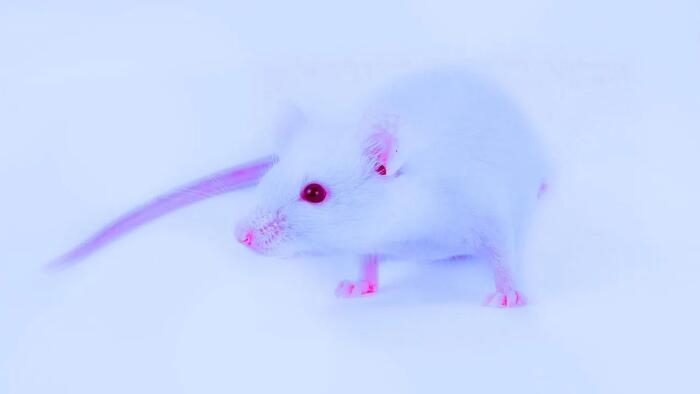


Authored by Jon Fleetwood via JonFleetwood.com (subscribe here),
South Korean scientists have conducted a lab experiment that made a purported wild avian influenza “bird flu” virus 100% lethal in mammals, achieving total death in infected mice by enabling the virus to adapt inside their bodies and spread to others.
The dangerous move comes as the U.S. develops a “next-generation” universal vaccine platform called ‘Generation Gold Standard’ that will focus on avian influenza jab creation, signaling a coordinated international push to engineer and preemptively vaccinate against lab-enhanced bird flu strains with pandemic potential—despite worldwide fallout from similar COVID-era strategies.
Published June 2025 in Virology Journal, the study describes how researchers at Konkuk University infected mice with a highly pathogenic H5N1 avian influenza strain—one that already contained a small percentage (4%) of a mammalian-adaptive mutation known as PB2-E627K.
That tiny minority of mutant virus was enough to take over and kill every infected host.
“All challenged mice died by 8 dpc. Transmission through direct-contact occurred in 100% of cases, and all contact mice died within 12 days.”
This was not an accidental discovery.
Researchers intentionally infected mammals with a virus they knew contained a mutation that helps bird flu spread and replicate more effectively in mammals, including humans.
Once inside the mice, the mutation exploded to near-total dominance—not just in the lungs, but in the brain, where it caused seizures, ataxia, and fatal neurological damage.
“The PB2-E627K variant, initially present at 4% in the virus stock, was selected and reached near-fixation (~ 100%) in the lungs and brains by 6 days post-challenge and was subsequently transmitted.”
“In dead direct-contact mice, the E627K mutation in PB2 was found at a proportion of 99.8–100% in both the lungs and brains.”
The virus became neurotropic—targeting the brain—and caused seizures and other neurological symptoms before death.
“Two out of three direct-contact mice displayed significant neurological symptoms, including seizure, ataxia, and bradykinesia.”
This is precisely the kind of gain-of-function-style research that Congressional hearings and federal reports have linked to the origins of the COVID-19 pandemic—a disaster that killed over a million Americans and possibly far more if COVID vaccine injury data is fully accounted for.
“Even a small proportion of mammalian-adaptive mutations can quickly become dominant as the virus serially transmits between mammals.”
The virus strain used in the study—isolated from a wild duck in Korea—was given to mice intranasally at high dose.
After just one round of infection, the mutation that enables efficient replication in mammals (PB2-E627K) went from 4% to nearly 100%, and was then passed to other mice who also died.
“In experiment 2, with a 1:1 challenge-to-contact ratio, all the challenged mice died. Transmission occurred in 50% of cases; three out of six contact mice died.”
This was not nature running its course—this was a deliberate laboratory setup that triggered a lethal evolutionary pathway, with full awareness of the risks.
No genetic engineering was needed—just the right environment and host to favor viral adaptation.
This is exactly the kind of procedure that reportedly allowed a bat coronavirus to become a pandemic-capable human pathogen in Wuhan.
“These findings highlight the need for continuous genomic monitoring to detect mammalian adaptation markers and assess interspecies transmission risks.”
Yet this isn’t the only high-risk bird flu experiment South Korea is conducting.
Just a month earlier, South Korean scientists published another Virology Journal paper revealing that they had engineered a chimeric H5N1 virus using hallmark gain-of-function (GOF) techniques—combining gene segments from three different influenza viruses to increase the virus’s heat resistance, alter host targeting, and enhance human cell entry.
“Recombinant viruses were generated using a pHW2000 plasmid-based reverse genetics system.”
“Combining the R90K and H110Y mutations (22W_KY) resulted in a synergistic increase in thermal stability and maintained HA activity without measurable reduction even after 4 h at 52 °C.”
“22 W HA and 22 W NA genes, along with six internal genomic segments (PB2, PB1, PA, NP, M, NS) from PR8 and a PB2 gene from 01310 containing the I66M, I109V, and I133V (MVV) mutations”
The study also confirmed enhanced antigen uptake and intracellular penetration in human cells:
“The highest level of intracellular entry was observed for BEI_22W_KY, confirming its superior effectiveness in penetrating cells.”
These GOF enhancements—increased thermostability, host retargeting, and replication modulation—were achieved without any mention of special oversight or biosecurity risk assessments, despite the White House having confirmed that the COVID-19 pandemic was caused by a virus engineered using similar techniques.
The timing raises concern, especially as the U.S. Department of Health and Human Services recently launched a $500 million “next-generation” bird flu vaccine initiative, drawing direct parallels between vaccine development programs and risky virological engineering.
If any of these engineered viruses escape containment—accidentally or intentionally—they could ignite a global pandemic, ironically the very scenario these experiments claim to prevent.
This particular mouse-killing study was performed in Biosafety Level 3 facilities at Konkuk University, sanctioned by the university’s Institutional Biosafety and Animal Care Committees:
“All experiments involving viable HPAI H5N1 viruses were conducted at a Biosafety Level (BSL)-3 facilities (Konkuk University) in accordance with procedures approved by the Konkuk University Institutional Biosafety Committee (approval no. KUIBC-2024-06).”
“Animal infection studies were reviewed, approved, and supervised by the Institutional Animal Care and Use Committee of Konkuk University (approval no. KU24080).”
The COVID pandemic taught the world what happens when supposed mammal-adaptive viruses leak from research settings.
Yet instead of a global moratorium on these reckless experiments, labs are still running trials that kill every mammal they infect—and worse, documenting how to do it again.
Follow us on Instagram @realjonfleetwood & Twitter/X @JonMFleetwood.
